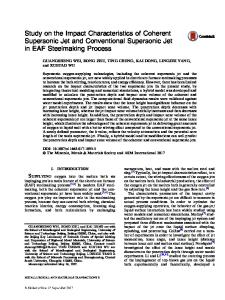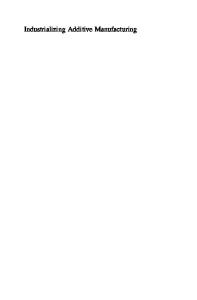Influence of the Carrier Gas Species on CaO-Gas Mixed Injection in the EAF Steelmaking Process
- PDF / 9,038,198 Bytes
- 14 Pages / 593.972 x 792 pts Page_size
- 80 Downloads / 281 Views
CTION
THE pneumatic injection of powders into iron and steel in the steelmaking process, such as the LD-AC,[1] LD-KG[2], STB-P,[3] and TDS[4] has become a very successful way to accomplish desulfurization, desiliconization and dephosphorization[5]. In recent years, steel-makers have looked for the sidewall injection of lime powder and carbon powder, which can provide a method for quick dissolution of lime. Lime injection technology has improved over the last few years, becoming a viable tool for electric furnace operations compared with past experiences.[6] However, steel-makers tended to focus on the metallurgical effects of powder blowing, but little attention was paid to the gas-particle fluid dynamics. To clarify the relative contribution of the gas-particle injections, several methods have been reported in the literature. Okuno[7] et al. conducted a CFD model and cold model experiment and developed a
XUETAO WU, RONG ZHU, GUANGSHENG WEI, and KAI DONG are with the School of Metallurgical and Ecological Engineering, University of Science and Technology Beijing, Beijing, 100083, P.R. China and also with Beijing Key Laboratory of the Research Center of Special Melting and Preparation of High-end Metal Materials, University of Science and Technology Beijing, Beijing, 100083, P.R. China. Contact e-mails: [email protected] and [email protected] Manuscript submitted December 15, 2018.
METALLURGICAL AND MATERIALS TRANSACTIONS B
non-dimensional equation of particle penetration depth to evaluate the effect of particle penetration depth on the solid/liquid mass transfer rate. Miyata[8] et al. carried out a three-dimensional fluid dynamics of solid-gas mixed-phase flow from a top-blowing lance with a single nozzle and triple nozzles. Yuu[9] et al. described the interaction between particles and air using the three-dimensional Eulerian air velocity and Lagrangian particle trajectory method. Ohguchi and Robertson[10] proposed a mathematical model to quantify the separate contribution of the transitory and permanent contact reactions for submerged injection of CaO-based powder to desulfurize molten iron. Kimura[11] evaluated the penetration depth of the powder into the furnace bath by cold model experiments and deducted an equation that can estimate the penetration depth of solids well. Numata and Higuchi[12] carried out 1500-kg scale experiments of CaSi mixed CaO powder top blowing onto the Al-killed steel under reduced pressure to investigate the effects of powder blowing on nitrogen removal in liquid steel. Uddin et al.[13,14] conducted a cold model experiment on the ion-exchange reaction between pearlite particles and HCl aq. and systematically investigated the effect of particle dispersion and operating factors on the solid/liquid mass transfer rate in a mechanical vessel. In the process of EAF steelmaking, lime injection with a burned mode has been proved to promote 100 pct lime injection and faster dissolution of lime, and it is usually used to spray the lime powder into the molten pool with air as carrier gas to reduce c
Data Loading...











